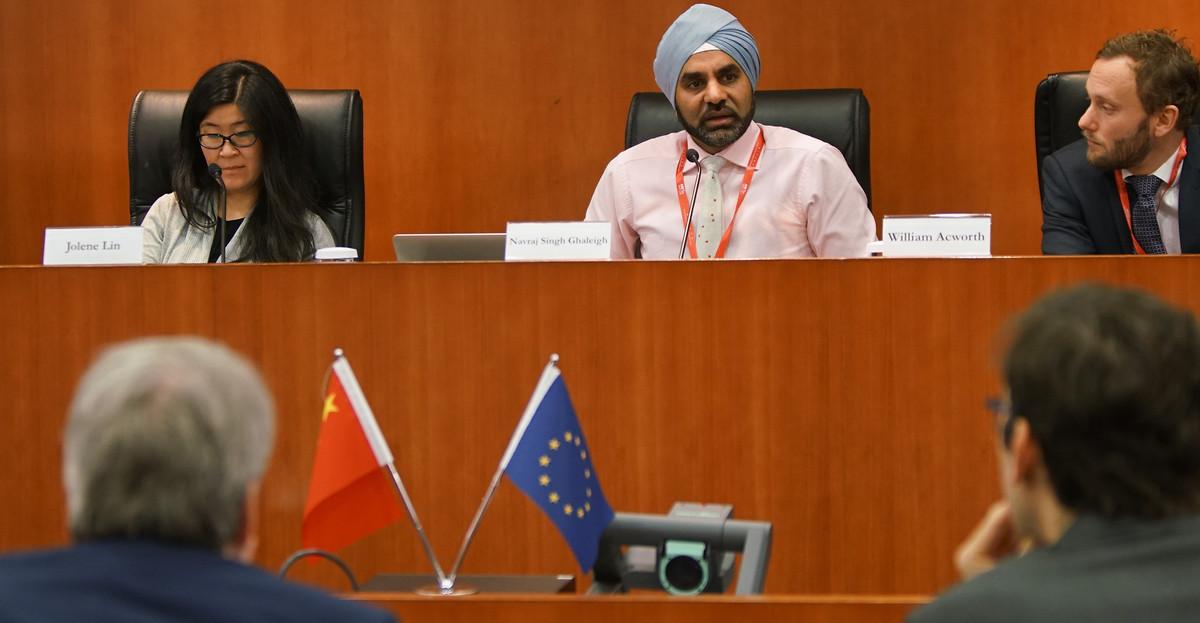Carbon Trading from an Investment Perspective - Regional Programme Energy Security and Climate Change in Asia and the Pacific
Event Reports
The European Union (EU) has started the world’s first Emissions Trading System (ETS) since 2005. Taking experiences from the European experience, several Asian countries introduced Emissions Trading System in recent years. In theorie, the ETS enables emitters to reduce greenhouse gas emissions in a more cost-effective way. Yet, in practice, to what extent has ETS driven investments in the decarbonisation of energy systems in the EU and Asia? The workshop sought to draw the EU lessons to understand the economic and legal implications of ETS for low-carbon investments in Asia, and in particular in China.
The workshop commenced with opening remarks by Prof. Christopher Gane, Dane of the Faculty of Law at CUHK, Dr. Peter Hefele, Director of KAS RECAP and Dr. Jolene Lin, Co-Director of the Asia Pacific Centre for Environmental Law at NUS. They highlighted the crucial role of ETS in bridging the emissions gap between the Nationally Determined Contributions and the emissions pathway consistent with the target set in the Paris Agreement. To foster decarbonization, there is a need to examine the regulatory frameworks and obstacles to the role of ETS as a driver of low-carbon investments.
Legal scholars and environmental experts from Europe and Asia discussed the relationship and interaction between ETS and low-carbon investment in global and regional carbon markets. The discussion focused on the EU and Chinese ETS in particular, whilst also mentioning recent attempts in Korea and Kazakhstan.
The EU sought to promote investment in clean and low-carbon technologies via implementing the ETS. However, studies have found the EU ETS has so far limited impacts in investment decisions. It has mainly suffered by low carbon pricing, which cannot prompt investors to take their private costs and social costs associated with emissions generated in daily business into consideration. In addition, absence of a stable price signal provides no financial incentive for consumers and producers to invest in energy efficiency programmes, clean technology and market innovation. The EU experience has hence shown that careful design and review is required to ensure that ETS do actually stimulate low carbon investment necessary to achieve the decarbonization of energy system.
For the Chinese case, the ETS started with seven pilot programs since 2013. It has not encountered high price volatility, since markets have been regulated by the Government. Research reveals that price stabilization schemes are effective in avoiding serious supply and demand imbalance and violent carbon price fluctuation in some pilot cities especially Hubei and Beijing. This provides a stable environment with clear price signals for firms’ abatement and investment activities. However, when the ETS is later introduced at the national level, a formal and national law would be required for smooth implementation of carbon pricing mechanisms in the country. All in all, the Chinese Government is keen on encouraging low-carbon investments for example by initiating emission right mortgage.
The highlight of the conference was the concluding session chaired by Dr. Peter Hefele, KAS RECAP’s Director on the potential for regional cooperation on expanding the existing carbon markets. Attendees acknowledged the national and regional difference of ETS in designs and implementation as a key challenge for cooperation between countries. Collaboration is only sustainable when they share similar economic and environmental visions. Joint cooperation can experimentally start with the local level and in the form of best-practices’ sharing.









